Abstract
Sixteen pupils in a psychiatric hospital were assigned to two tutorial reading classes and balanced on six pupil characteristics and teacher preferences for the children. The effects of reward and cost procedures in a token program were assessed using both within- and between-subject comparisons in the following phases: (1) Baseline; (2) Token I, teacher evaluated and reinforced children for appropriate behavior; (3) Withdrawal of Tokens; (4) Token II, same as Token I; (5) Token III, same as Token I and II, but switched order of class meeting time; and (6) Self-Evaluation, students rated their own behavior and received prizes based on their rating, rather than the teacher's rating. The token program was markedly successful in reducing disruptive behavior and in increasing reading skills in both the Reward and Cost Classes, but there were no significant differences in the effects of the reward versus the cost procedure. While cost may be seen as a punishment procedure, there were no adverse side effects observed in the Cost Class at any time when the token program was in effect. The order of the classes was unrelated to the level of disruptive behavior or academic progress. The Self-Evaluative Phase, in which the students rated their own behavior, was included as an alternative to the abrupt withdrawal of tokens. In this phase, disruptive behavior remained at the previous low level.
Full text
PDF
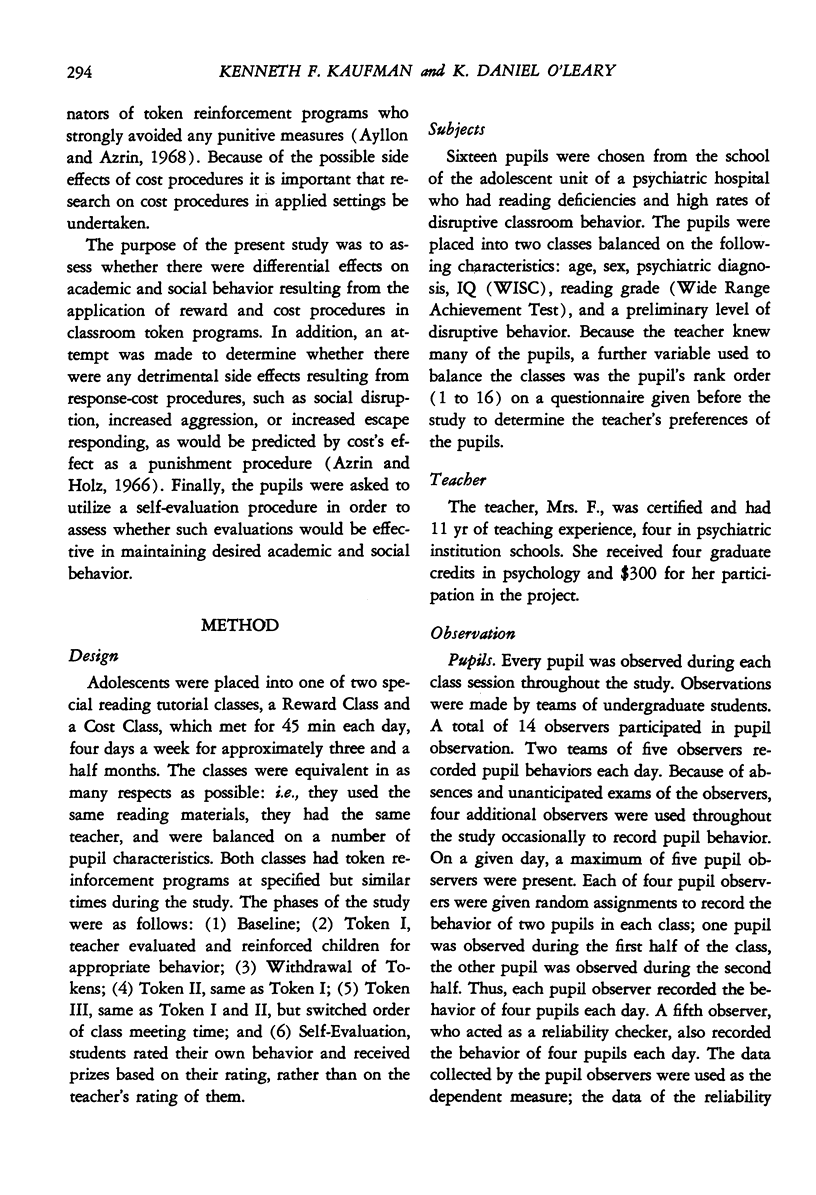
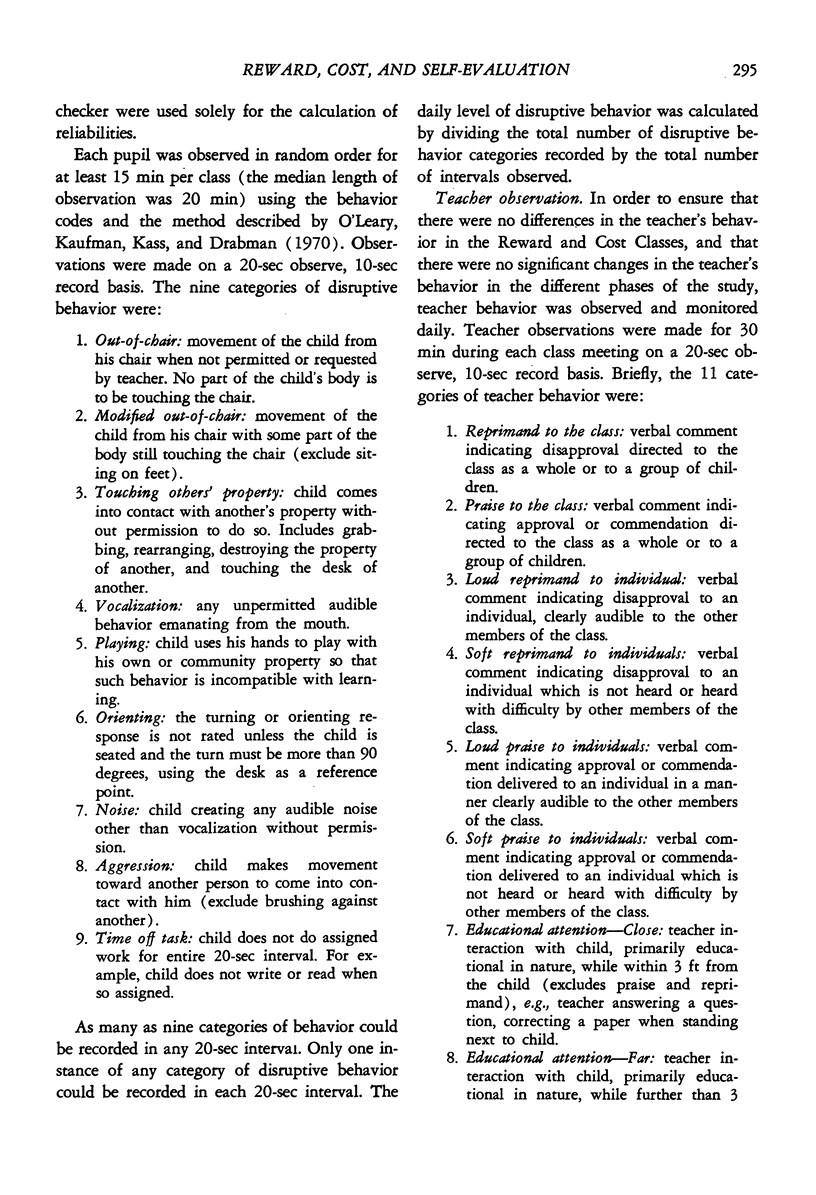




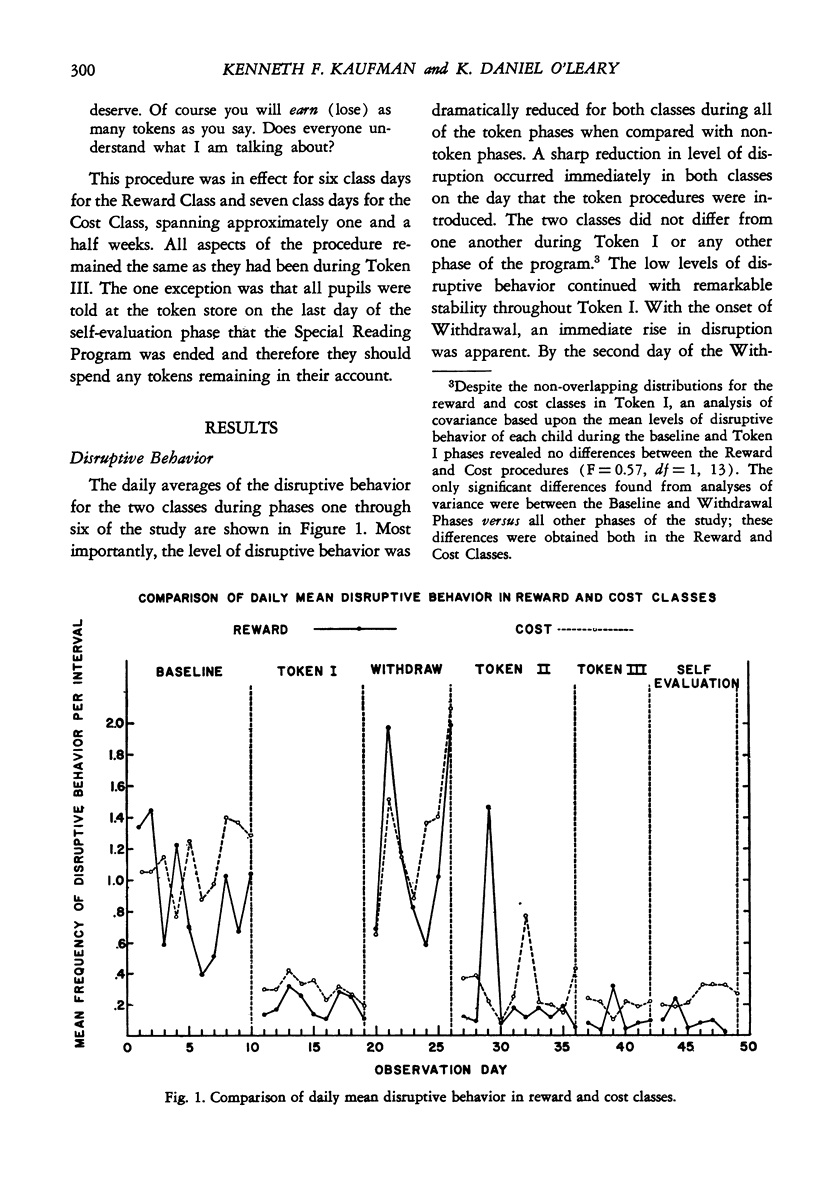
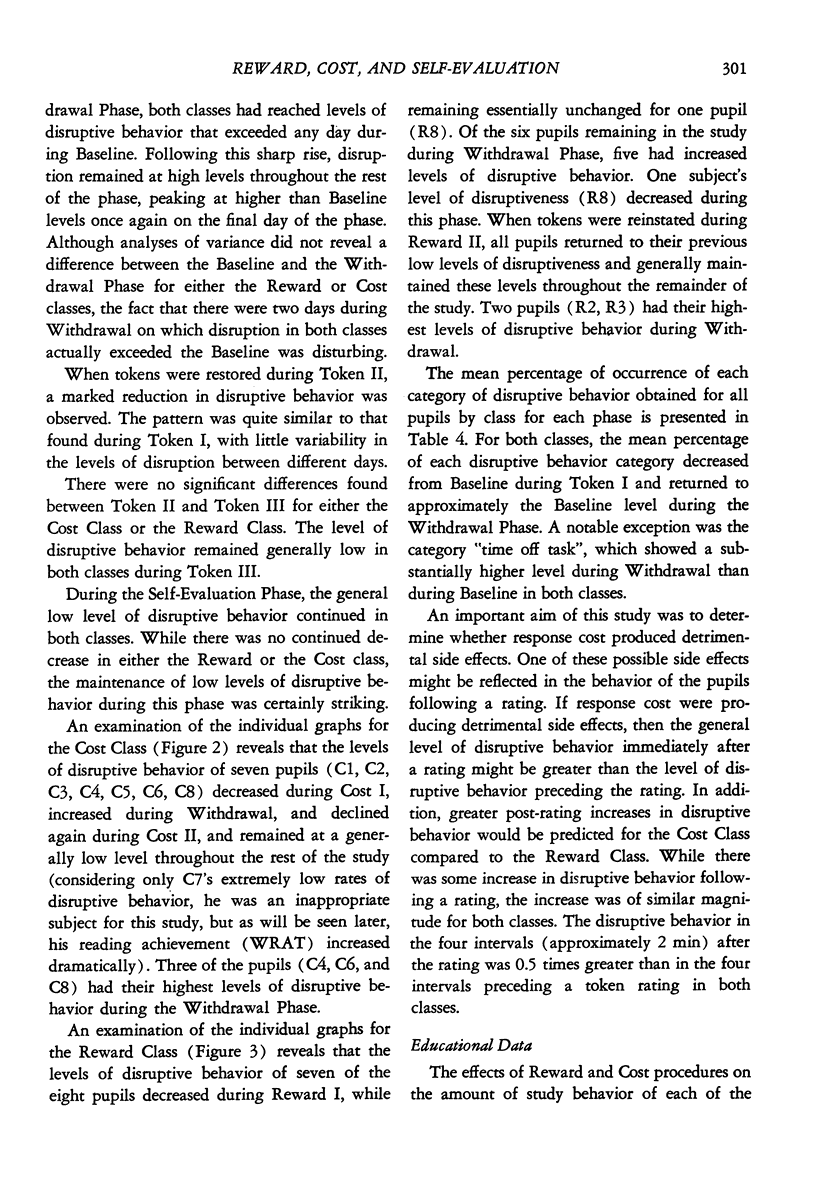
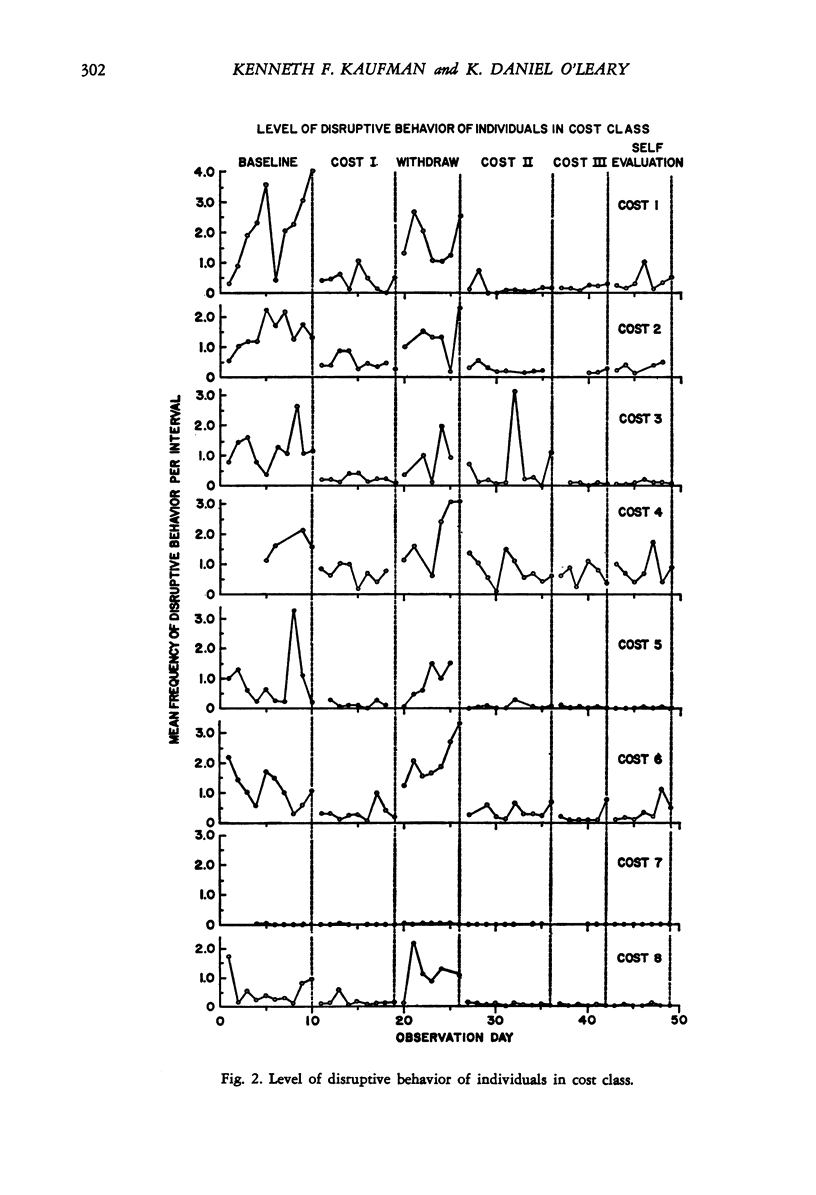
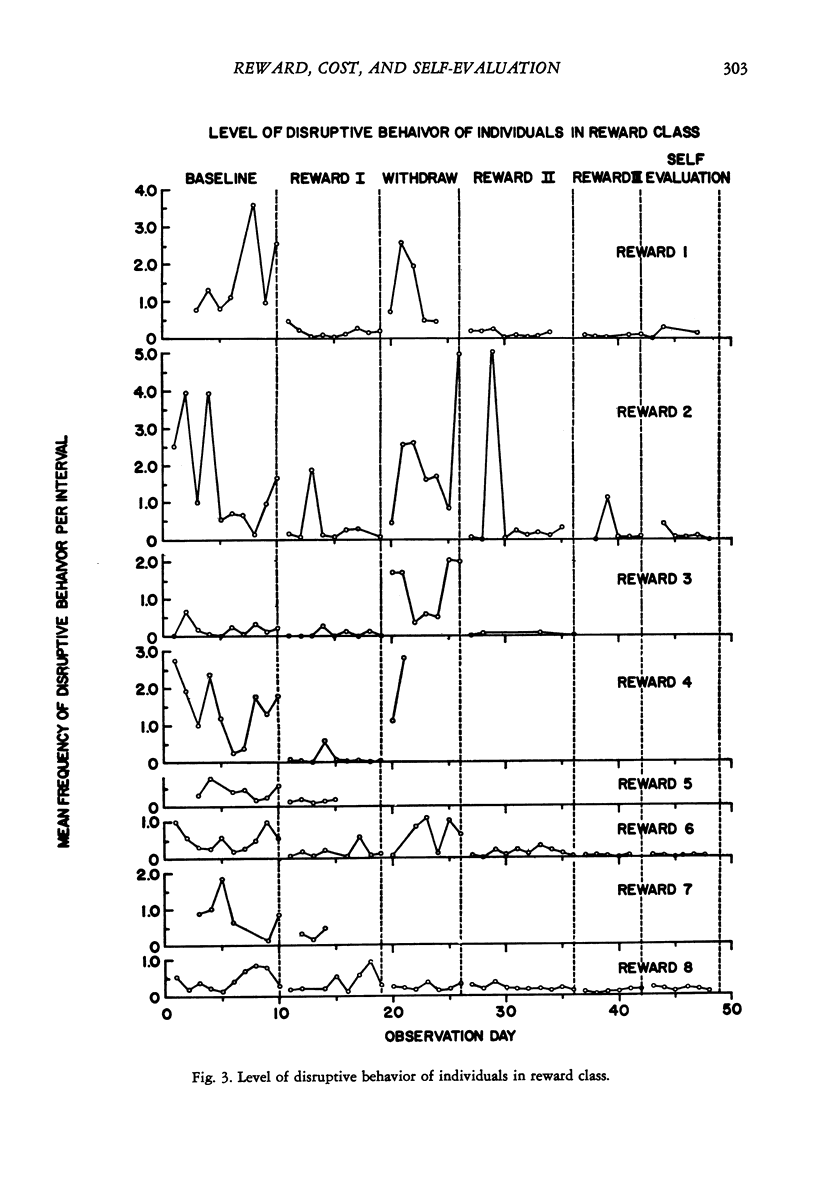
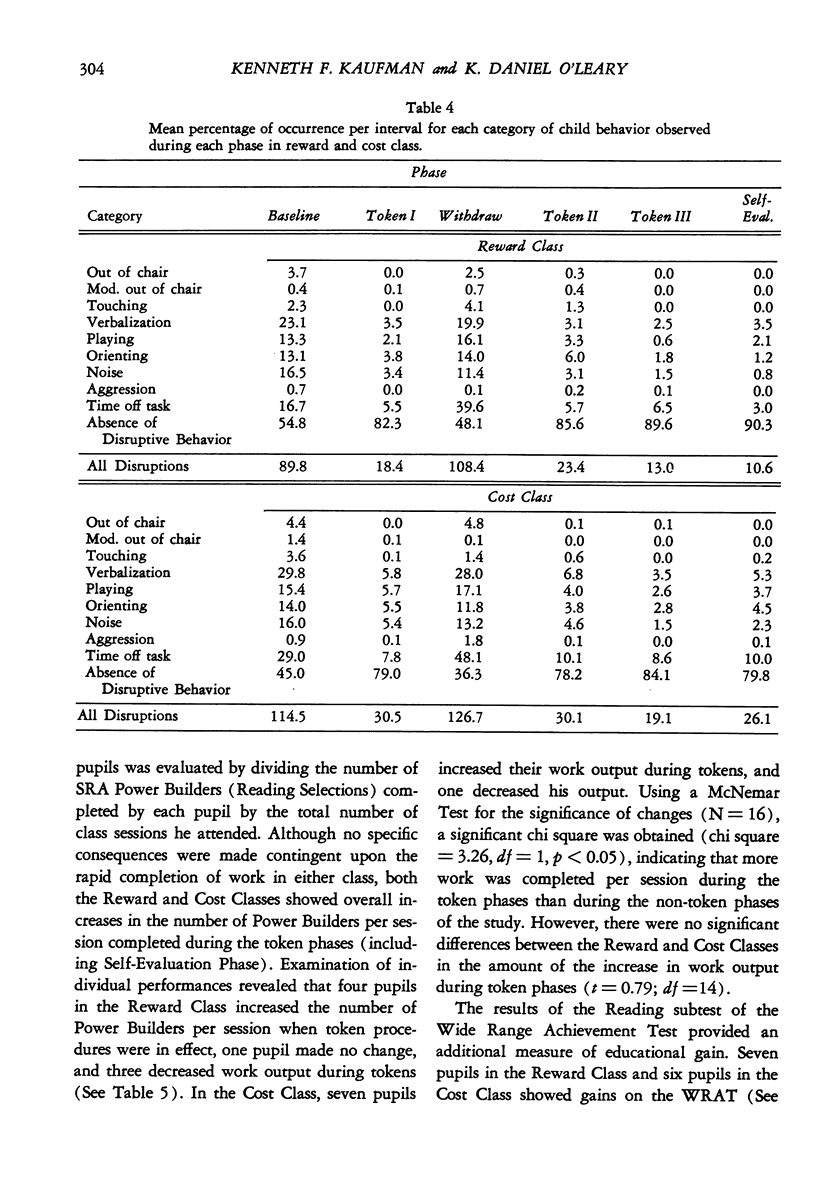
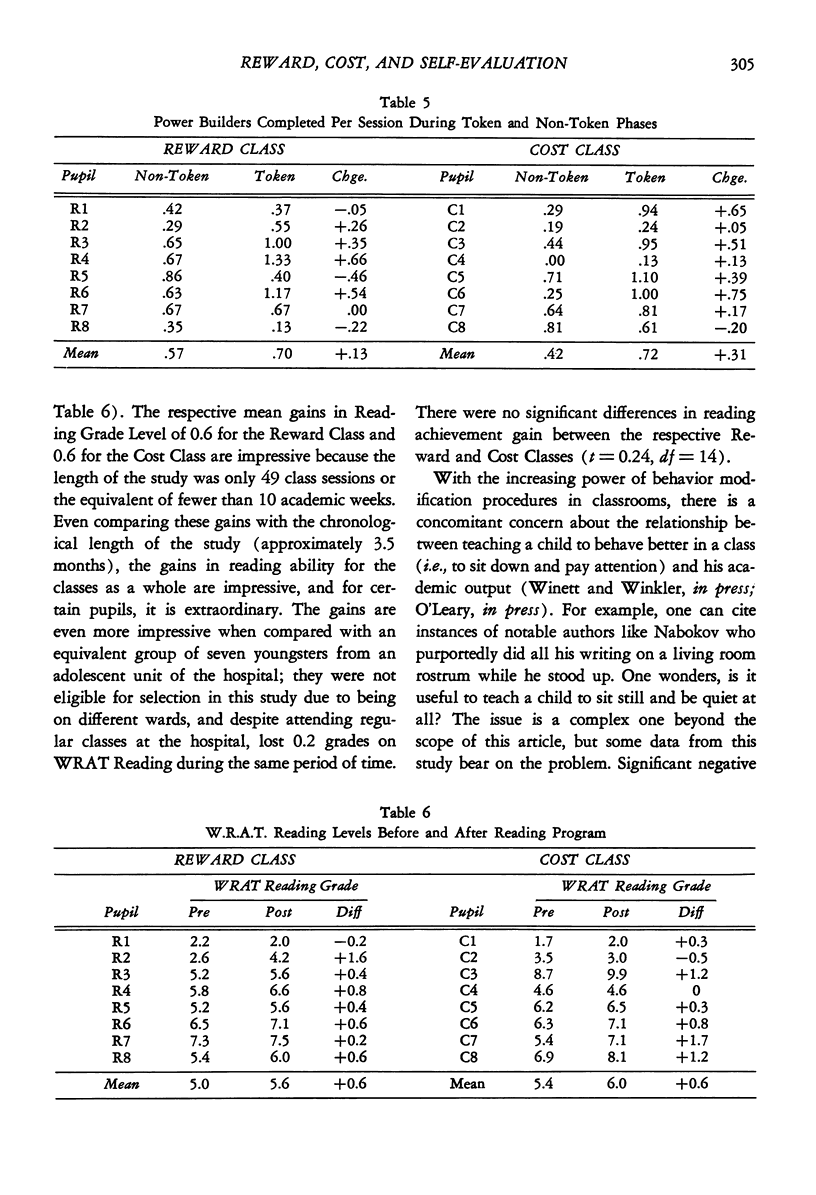
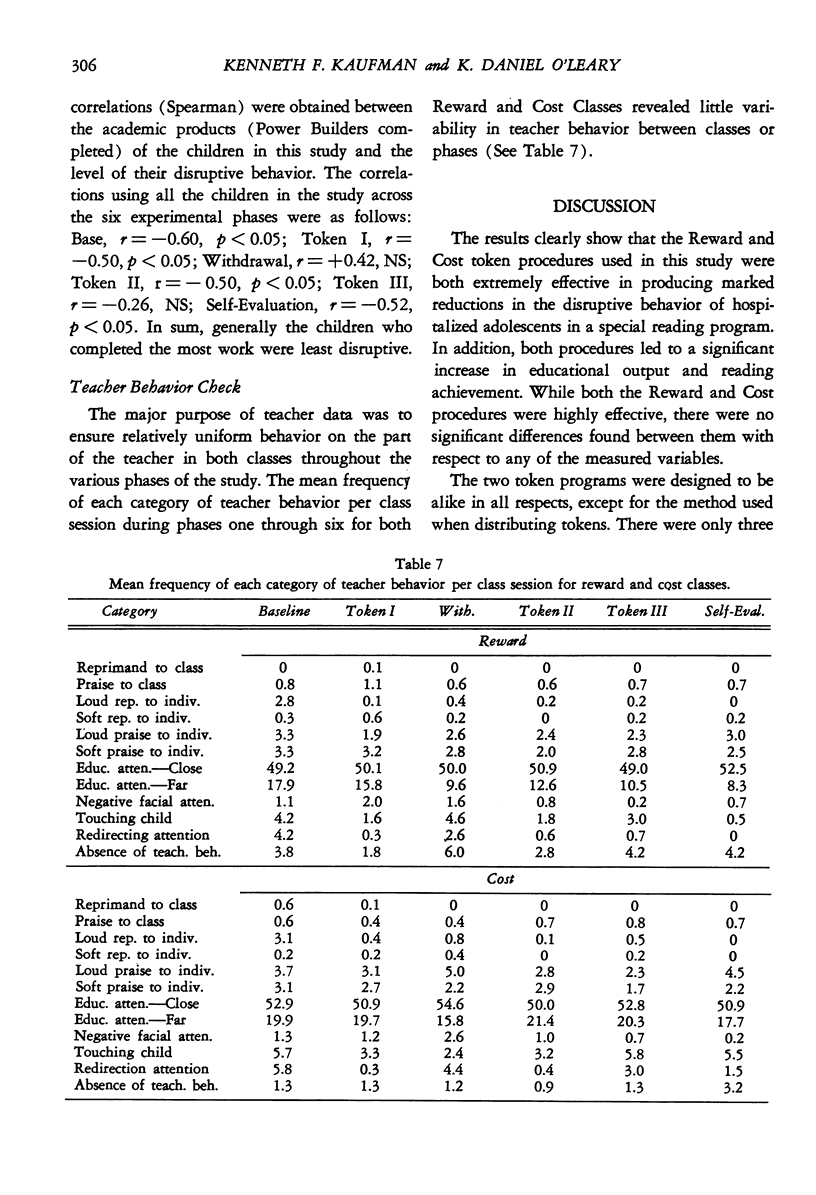
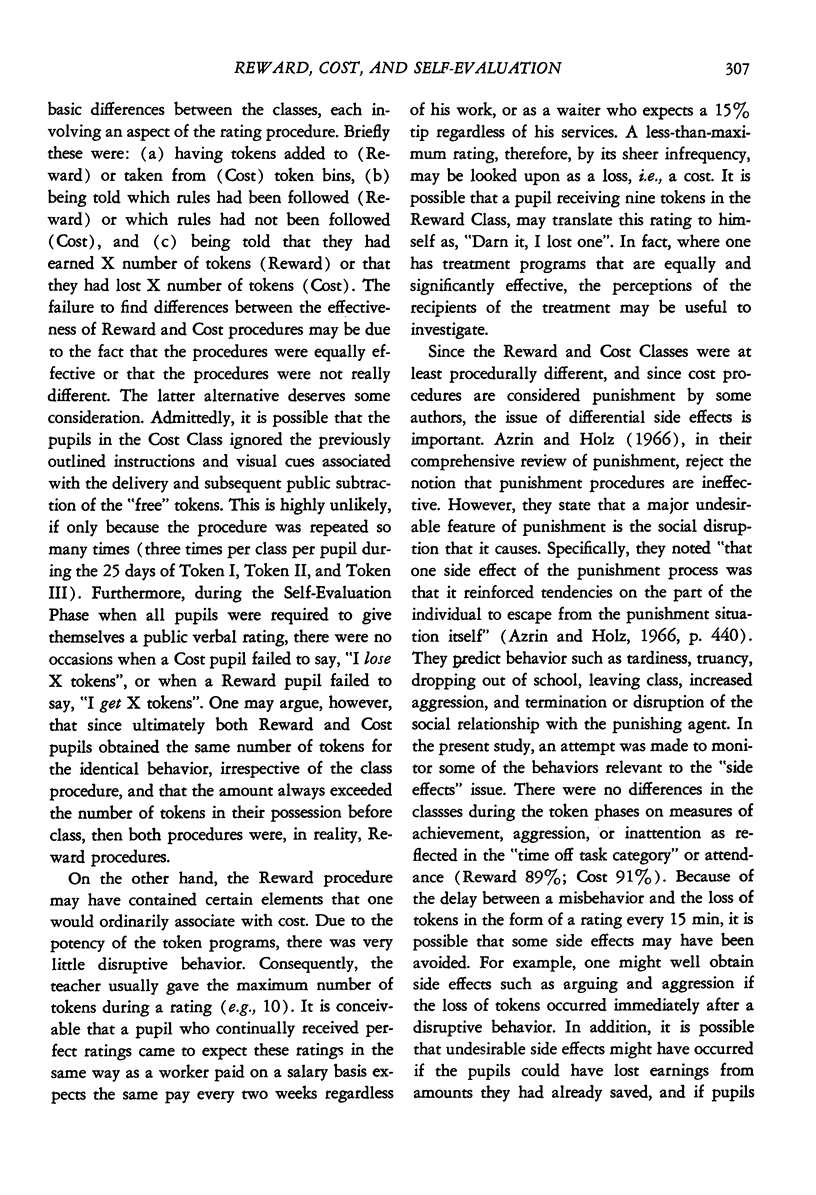
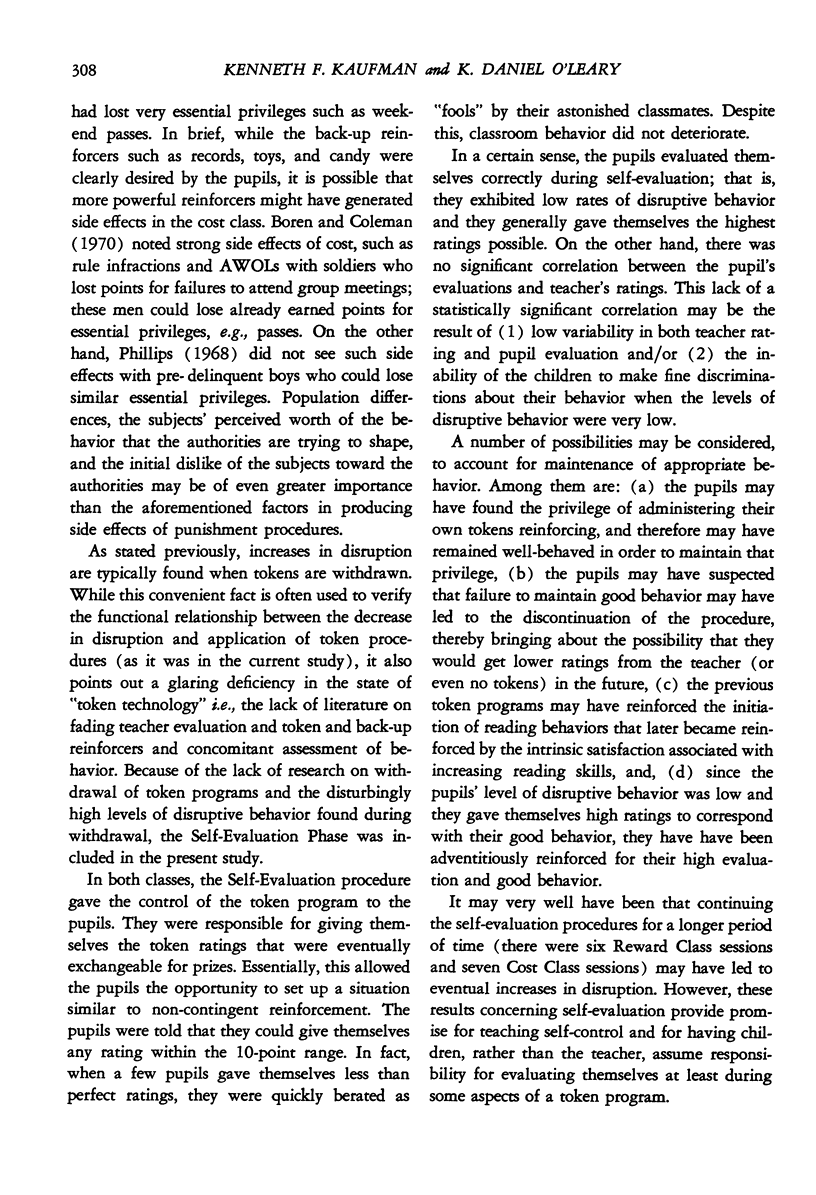
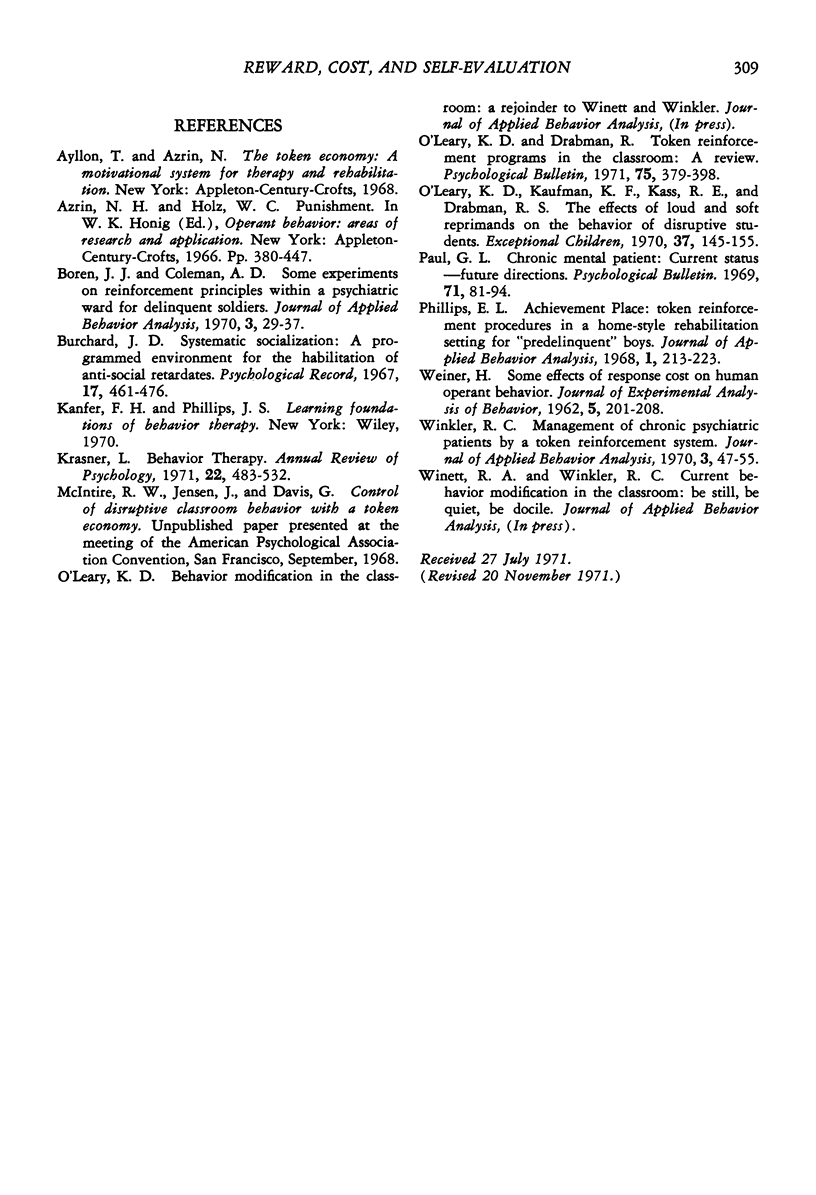
Selected References
These references are in PubMed. This may not be the complete list of references from this article.
- Boren J. J., Colman A. D. Some experiments on reinforcement principles within a psychiatric ward for delinquent soldiers. J Appl Behav Anal. 1970 Spring;3(1):29–37. doi: 10.1901/jaba.1970.3-29. [DOI] [PMC free article] [PubMed] [Google Scholar]
- Krasner L. Behavior therapy. Annu Rev Psychol. 1971;22:483–532. doi: 10.1146/annurev.ps.22.020171.002411. [DOI] [PubMed] [Google Scholar]
- O'Leary K. D., Kaufman K. F., Kass R. E., Drabman R. S. The effects of loud and soft reprimands on the behavior of disruptive students. Except Child. 1970 Oct;37(2):145–155. [PubMed] [Google Scholar]
- Paul G. L. Chronic mental patient: current status--future directions. Psychol Bull. 1969 Feb;71(2):81–94. doi: 10.1037/h0027065. [DOI] [PubMed] [Google Scholar]
- Phillips E. L. Achievement Place: token reinforcement procedures in a home-style rehabilitation setting for "pre-delinquent" boys. J Appl Behav Anal. 1968 Fall;1(3):213–223. doi: 10.1901/jaba.1968.1-213. [DOI] [PMC free article] [PubMed] [Google Scholar]
- WEINER H. Some effects of response cost upon human operant behavior. J Exp Anal Behav. 1962 Apr;5:201–208. doi: 10.1901/jeab.1962.5-201. [DOI] [PMC free article] [PubMed] [Google Scholar]


